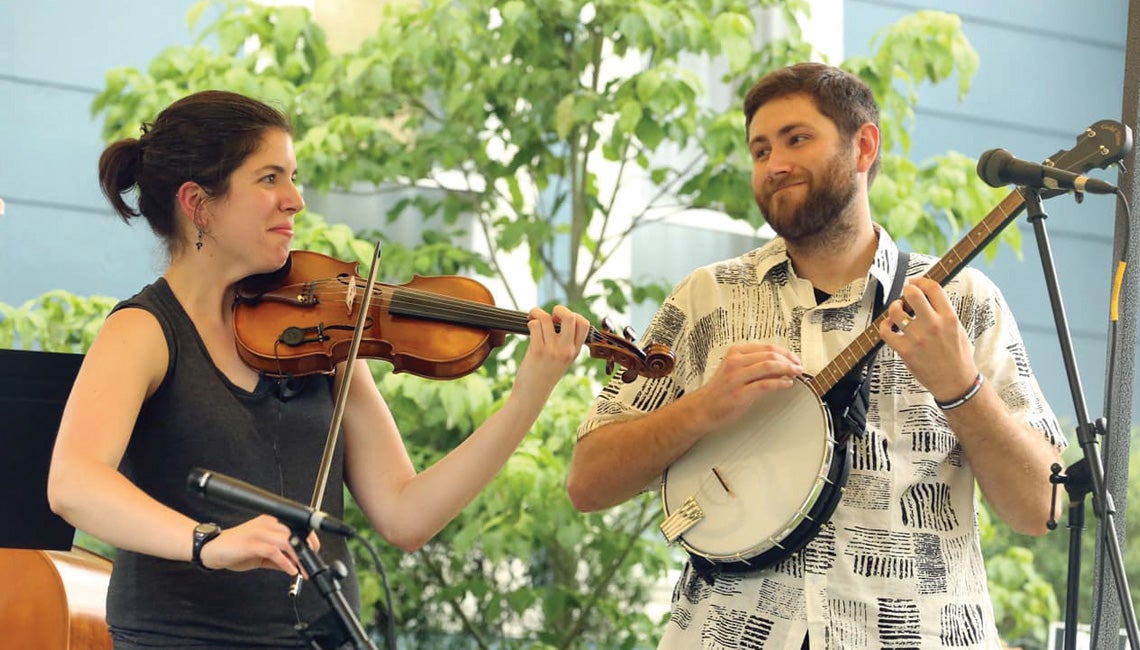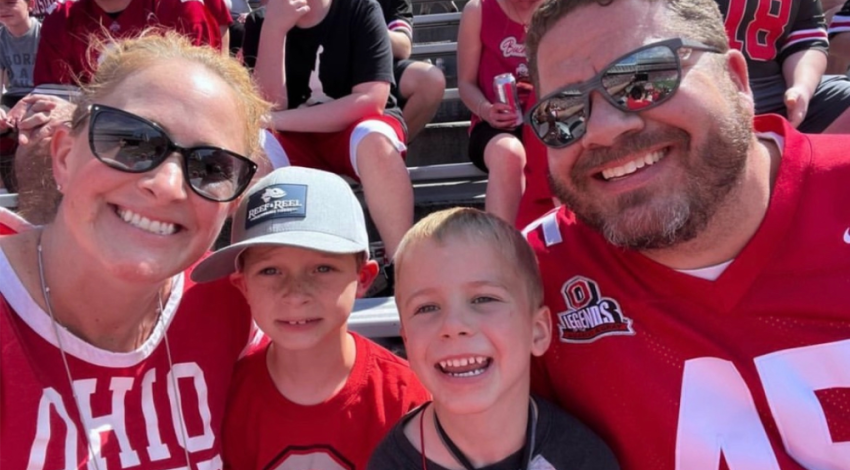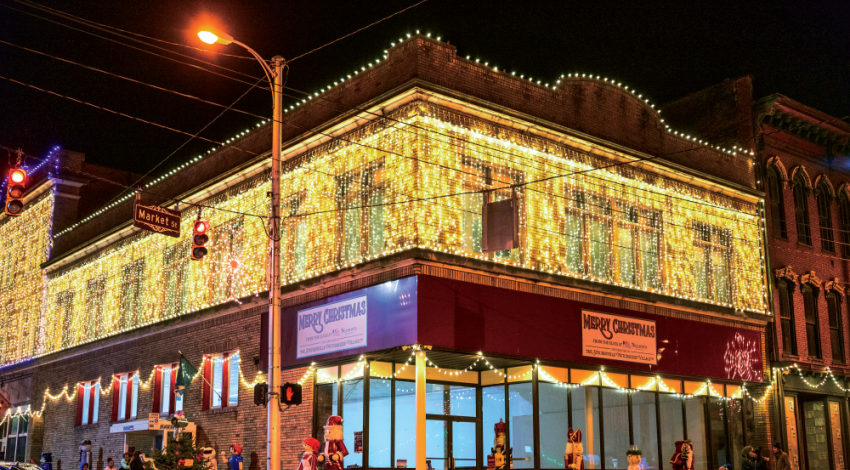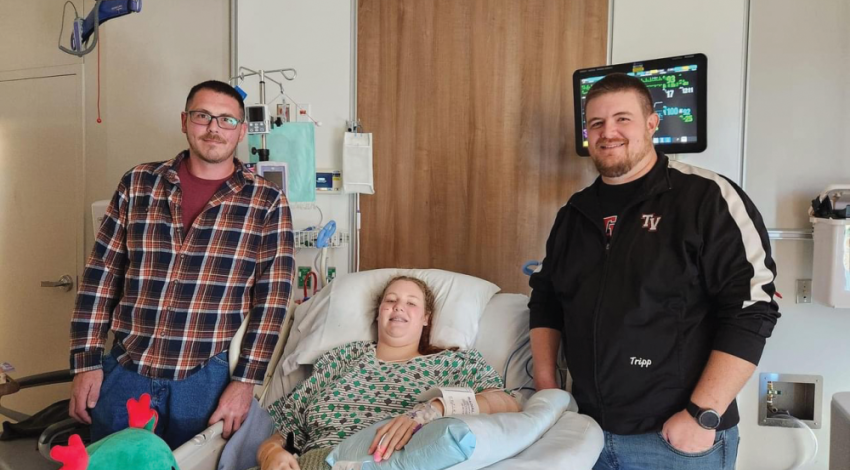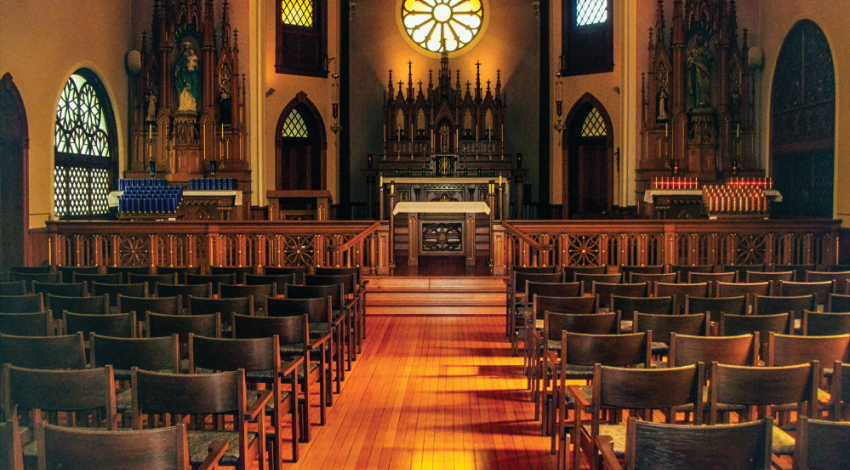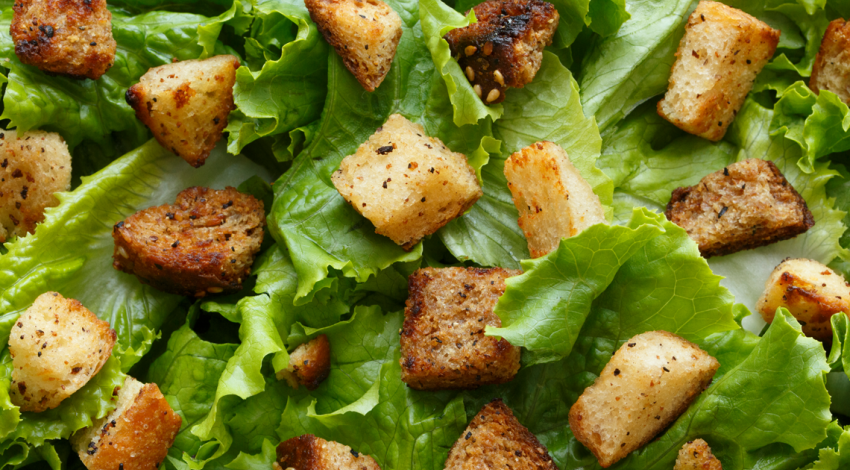They start showing up on West Lincoln Avenue in Delaware — folding chairs, blankets, and snacks in tow — around dinnertime on Fridays during the summer, setting up on both sides of the street near No. 77, the blue house just a little ways over from the Asbury United Methodist Church.
There’s always a good-sized crowd gathered by 7 p.m., when the jazz starts.
Korey and Abby Wimbiscus Black launched their neighborhood summer series, “Jazz on Lincoln,” during the COVID-19 pandemic. Korey, a professional jazz musician as well as a middle school band director in Worthington, got more and more restless as his gigs were canceled.
Korey and Abby Wimbiscus Black launched their neighborhood summer series, “Jazz on Lincoln,” during the COVID-19 pandemic.
“I was so frustrated that I couldn’t play,” he says. So he started calling up a few musician friends and they did some socially distanced sets in his backyard for a few neighbors who would “sit and be kind,” he says. Soon enough, the neighbors encouraged them to move the show to the front yard.
That first summer, Korey played every Friday night show. He and Abby — and the neighbors — enjoyed it so much that they expanded the series the next summer, and now it’s to the point that bands audition for spots and the crowds have grown 10- or 20-fold from those first intimate sets. The Blacks even got a grant from the Greater Columbus Arts Council to purchase sound equipment.
“It is a second job,” Korey says of planning the series. “It is one hundred percent a second job.”
He says a German band on tour in the United States was among the 24 jazz groups (and one tap dancer) that applied to be part of this year’s series. Korey and Abby, a music teacher based at Dempsey Middle School in Delaware, review every application, listen to all the auditions, and sometimes even travel to hear bands that have applied to play. They had so much trouble paring down the list this year that they ended up adding a 10th show to the 2025 schedule. (They couldn’t find a way to schedule the German band, but Korey says they appreciated the interest.)
The Blacks try to present a range of styles, from traditional 1920s jazz to John Coltrane and Miles Davis to funk — which is “not exactly jazz,” Korey says, but has roots in the genre. There’s even a big band included in this summer’s series.
Abby and Korey serve as masters of ceremony. Abby takes photographs and manages their Facebook page — which is a good source of information about the series, as is their website.
“Jazz is our language,” Korey says, noting that the neighborhood setting is “a unique opportunity for a relationship between a musician and an audience.”
He says he’s grateful for his supportive neighbors. “We have never had a single complaint about this concert series,” he says. Beyond that, when the Blacks arranged for food trucks to be available to concertgoers, neighbors invited the trucks to park in their driveways so they wouldn’t block the street.
That won’t be as much of a concern this year, as the local Backstretch Bar & Pub will provide food for the season. Even so, they have looked into closing the street altogether on concert nights, but Lincoln has remained open so far; Delaware police cruisers, occupants smiling, are among the occasional cars that pass through.
Also new this summer is a read-aloud before the concert. Abby has partnered with Delaware’s Beanbag Books to read picture books about music before the concert begins. “We hope it’s not just something that only very young kids can enjoy,” Korey said.
He’s been gratified by how so many factors have come together to make the series such a success, despite happening in a place that would never be confused with a traditional jazz venue.
He’s also proud that it’s happened in a completely organic way (“It’s all very grassroots, purposely,” he says). They don’t advertise; publicity is entirely word of mouth, on their website, or on Facebook. The shows are free, though there are tip jars placed on both sides of the street — 100% of which goes to that evening’s musicians and typically provides a decent haul, Korey says.
Of course, that location also puts limits on how much growth can happen. “If it becomes even bigger, that would change it,” Korey says. “The heart of this is it’s community, grassroots, organic entertainment. It started out just as an excuse to play some music when that was tough to do. The byproduct has turned into something that is just magical.”
